Search Results
Filters
Advanced Search
2143 Results
-
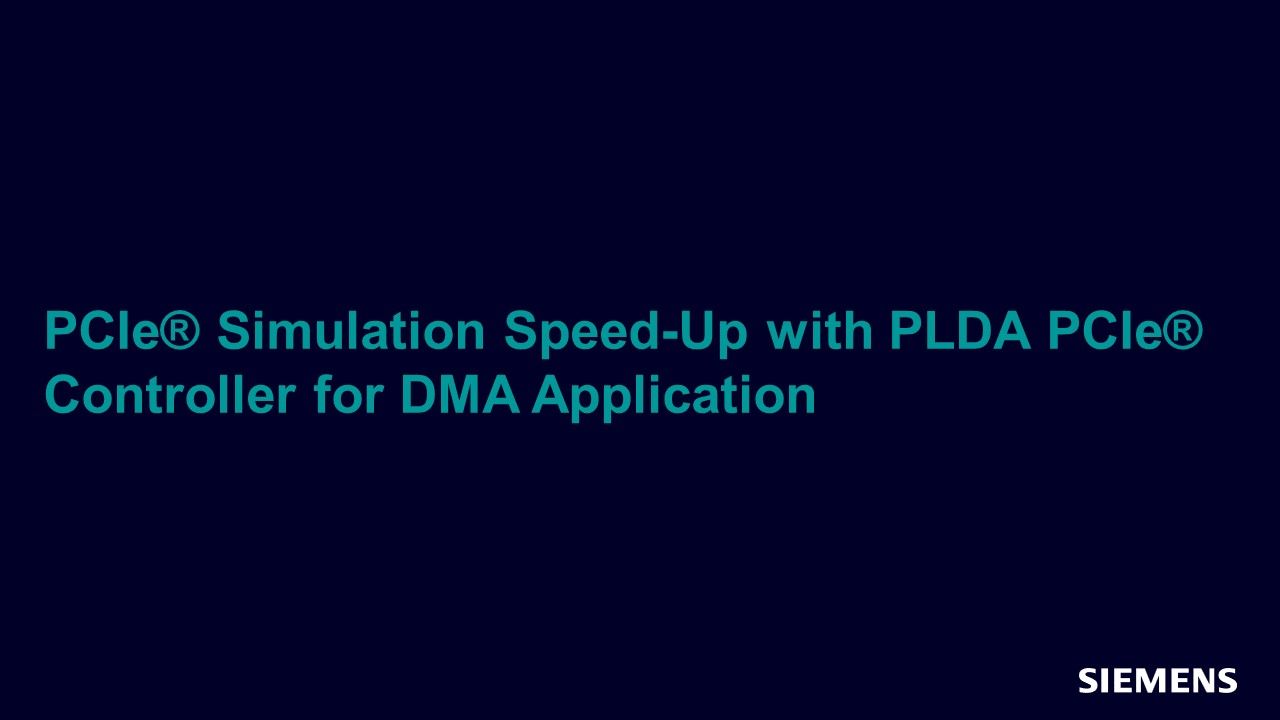
PCIe® Simulation Speed-Up with PLDA PCIe® Controller for DMA Application
Article - Jul 19, 2020 by Akshay Sarup
PCI Express® (PCIe®) is a dominant technology for hardware applications requiring high-speed connectivity between networking, storage, FPGA, and GPGPU boards to servers and desktop systems. It is a robust technology that has evolved over decades to keep up with advancements in throughput and speed for I/O connectivity for computing requirements.
-
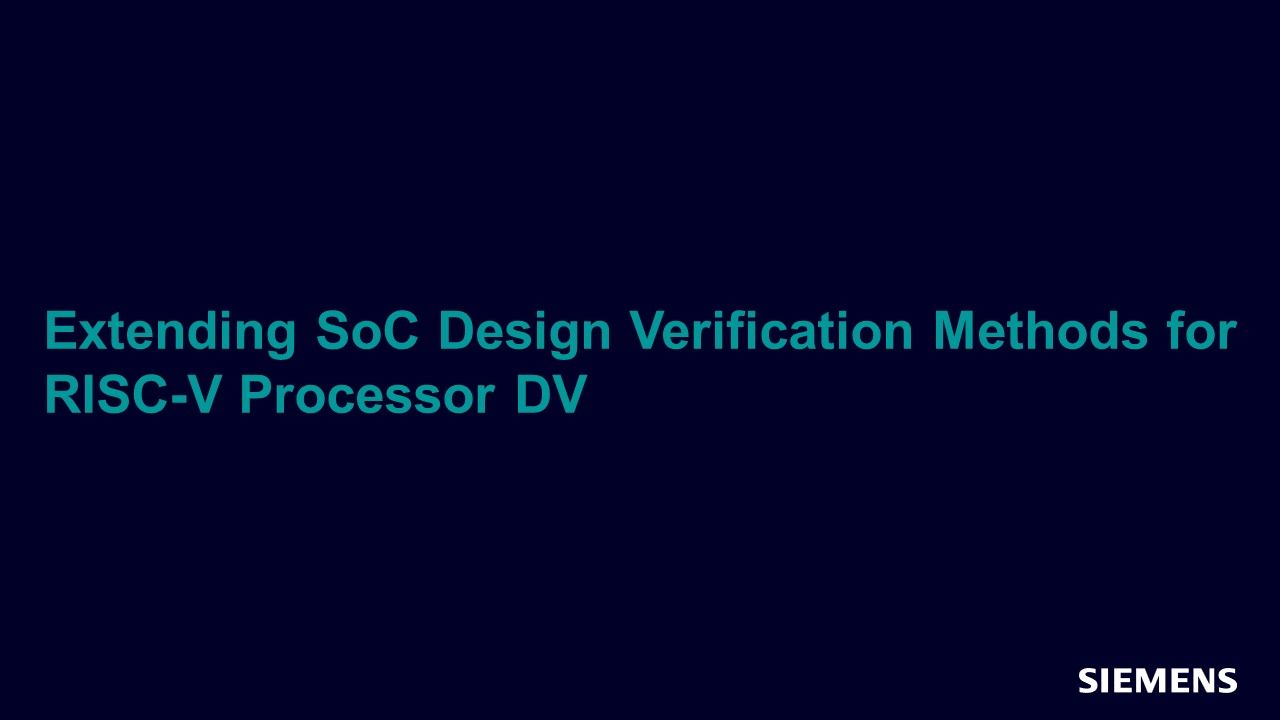
Extending SoC Design Verification Methods for RISC-V Processor DV
Article - Jul 19, 2020 by Larry Lapides
As SoC developers adopt RISC-V and the design freedoms that an Open ISA (Instruction Set Architecture) offers, DV teams will need to address the new verification challenges of RISC-V based SoCs. The established SoC verifications tasks and methods are well proven, yet depend on the industry wide assumption of ‘known good processor IP’ based on the quality expectations associated with IP providers such as Arm or MIPS Technologies.
-
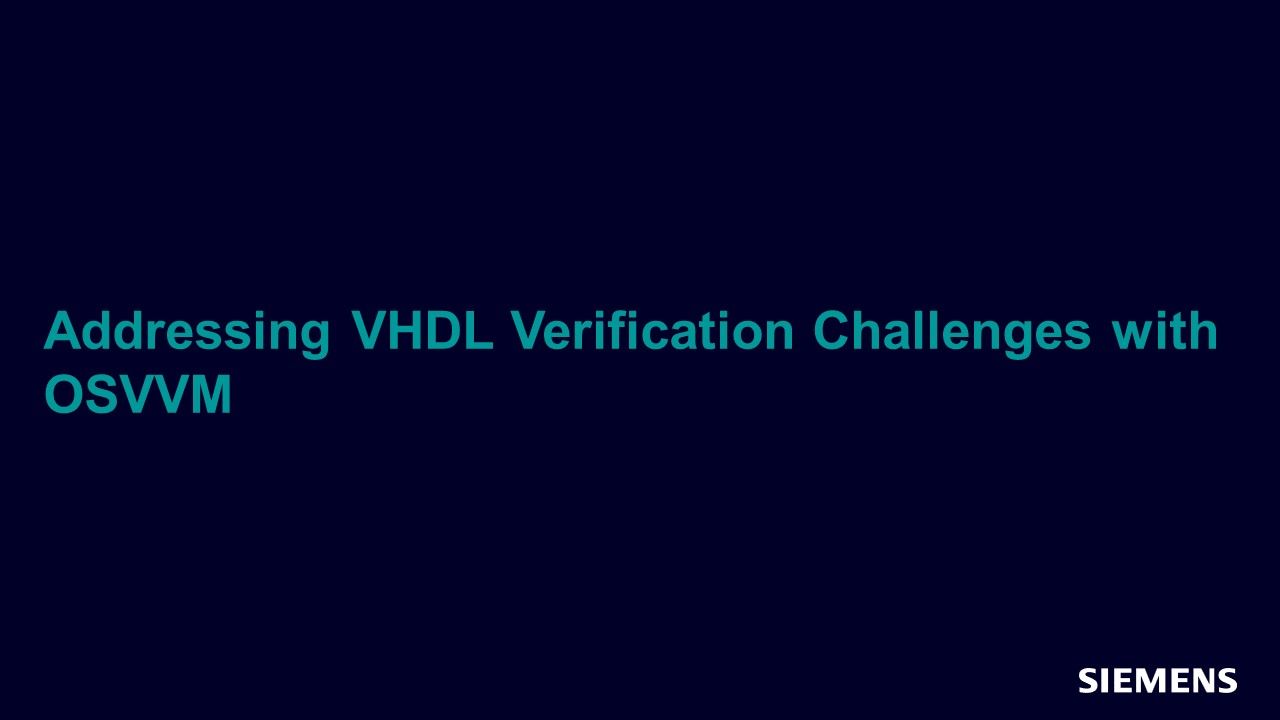
Addressing VHDL Verification Challenges with OSVVM
Article - Jul 19, 2020 by Jim Lewis
Most people don't think of VHDL as a verification language. However, with the Open Source VHDL Verification Methodology (OSVVM) utility and verification component libraries it is. Using OSVVM we can create readable, powerful, and concise VHDL verification environments (testbenches) whose capabilities are similar to other verification languages, such as SystemVerilog and UVM.
-

Effective Validation Method of Safety Mechanism Compliant with ISO 26262
Article - Jul 19, 2020 by Toshiyuki Hamatani - Verification Technology, Inc.
The metrics to measure the effectiveness of Safety Mechanisms include code coverage rate, SPFM (Single- point failure metric) and LFM (Latent failure metric). Especially in SPFM and LFM, if the specified value is not reached on the Fault Injection Simulation (using Gate Level) at the end of verification, it will cause iterations, which will cause a significant increase in time and cost compared to consumer LSIs.
-

When Are You Done Running CDC?
Webinar - Jul 16, 2020 by Chris Giles
In this session you will learn whether or not you might still have asynchronous clock or reset issues lurking in your design, despite having identified the crossings, ensured synchronizers are present, and reviewed your code – or even already run CDC analysis, ensuring that all CDCs are solid.
-
When Are You Done Running CDC?
Resource (Slides (.PDF)) - Jul 16, 2020 by Chris Giles
In this session you will learn whether or not you might still have asynchronous clock or reset issues lurking in your design, despite having identified the crossings, ensured synchronizers are present, and reviewed your code – or even already run CDC analysis, ensuring that all CDCs are solid.
-
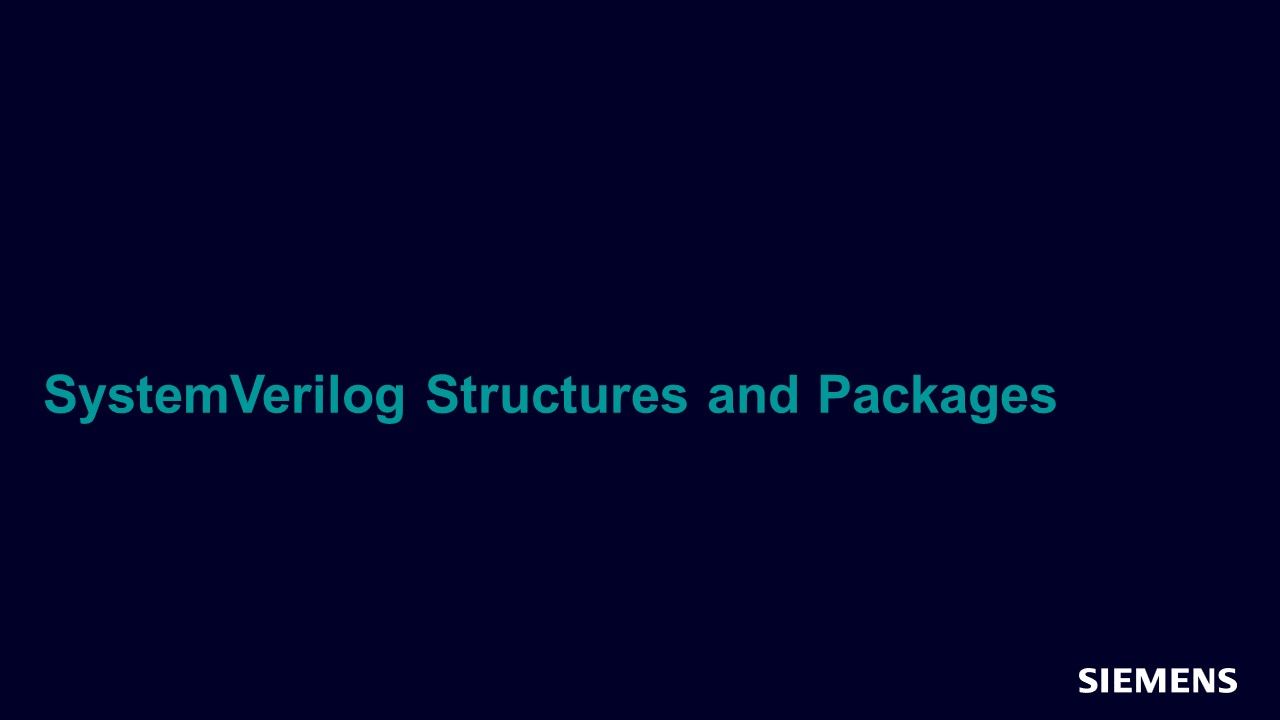
Get Your Bits Together: SystemVerilog Structures and Packages
Webinar - Jul 14, 2020 by Chris Spear
In this session, you will learn best practices for structures and packages in the SystemVerilog language and how you can combine related definitions for data types, parameters, classes, and more into a package that is easily shared and reused.
-

Simplifying Questa Usage and Deployment with Qrun
Webinar - Jul 09, 2020 by Tom Kiley
In this session, you will learn how to reduce the complexity of compiling, optimizing, elaborating, and simulating your design. Qrun encapsulates the details of the QuestaSim tool invocation. Users commonly write scripts or makefiles to encapsulate these steps.
-

Introduction to Visualizer for the VHDL Users
Webinar - Jun 30, 2020 by Rich Edelman
This session will introduce the Visualizer Debug Environment for VHDL and UVM.
-

Introduction to Visualizer for the Verilog Users
Webinar - Jun 16, 2020 by Rich Edelman
This session will introduce the Visualizer Debug Environment for Verilog and UVM.
-

ISO 26262 Functional Safety for Autonomous Vehicles
Webinar - Jun 11, 2020 by Jake Wiltgen
When verifying safety critical systems, the stakes are raised in ensuring that bugs/defects are not introduced into production with many standards striving for zero defective parts per million. The powerful combination of Siemens EDA Functional Verification and Functional Safety products together with Siemens’ Lifecycle Management tools provide built-in guidance and automation helping you navigate the difficult waters of safety compliance.
-

Confronting Inevitability: Finding Clock and Reset Issues Before They Find You
Webinar - Jun 11, 2020 by Chris Giles
In this session, you will learn the full scope of synchronization issues and how Questa’s clock- and reset-domain crossing solution will help you avoid costly design flaws and accelerate your time to market.
-

Taking SystemVerilog Arrays to the Next Dimension
Webinar - Jun 05, 2020 by Chris Spear
In this session, you will learn the various array types in the SystemVerilog language, and how to pick the right ones for your testbench. As a result, your testbench code will be easier to understand and reuse, run faster, and consume less memory.
-
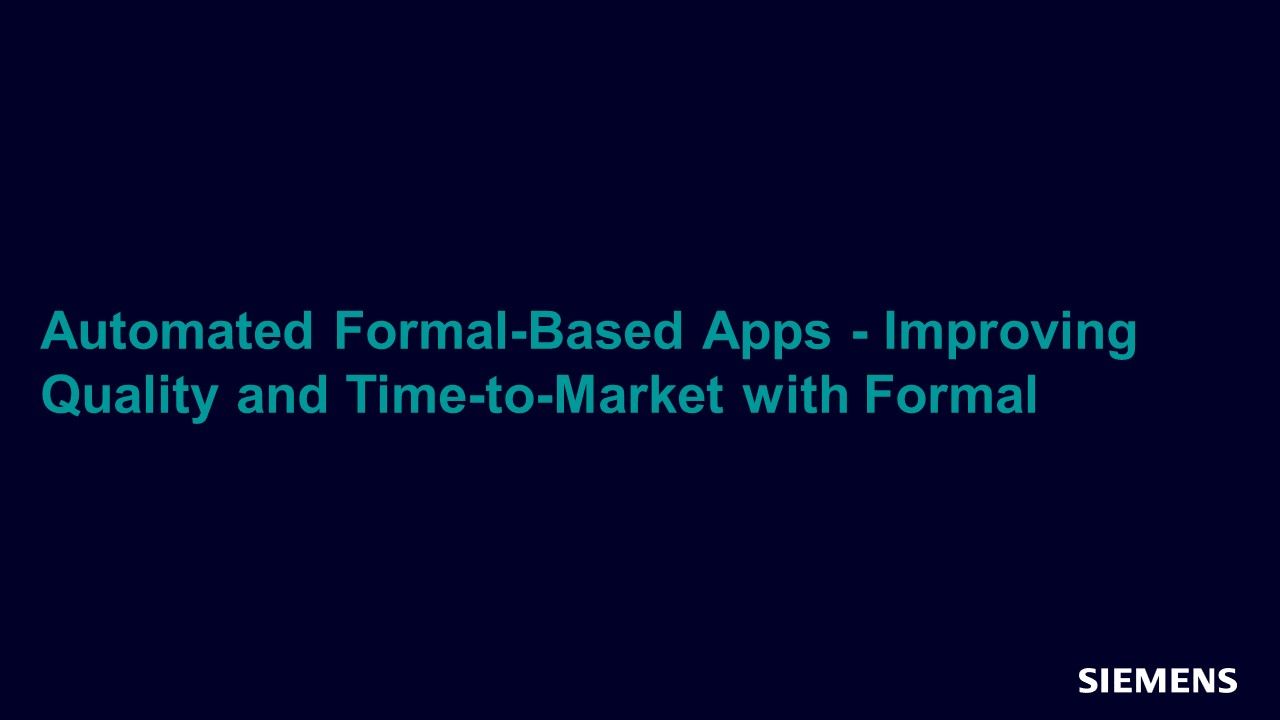
Automated Formal-Based Apps - Improving Quality and Time-to-Market with Formal
Webinar - Jun 04, 2020 by Joe Hupcey
In this session, you will learn how formal apps can help you address high-value verification challenges; finding deep bugs in complex logic, accelerating code coverage closure, uncovering register policy corner cases, validating low power clock gating, late ECOs or bug fixes, or fault/SEU mitigation logic and more.
-

Direct Formal Property Checking - Improving Quality and Time-to-Market with Formal
Webinar - Jun 04, 2020 by Mark Eslinger
In this session, you will learn how formal analysis works, how you can create an effective "formal testbench" with very basic, easy-to-write properties, plus an introduction to popular formal verification methodologies: bug hunting, completely proving the correctness of critical DUT functions, and proving the absence of deadlock.
-
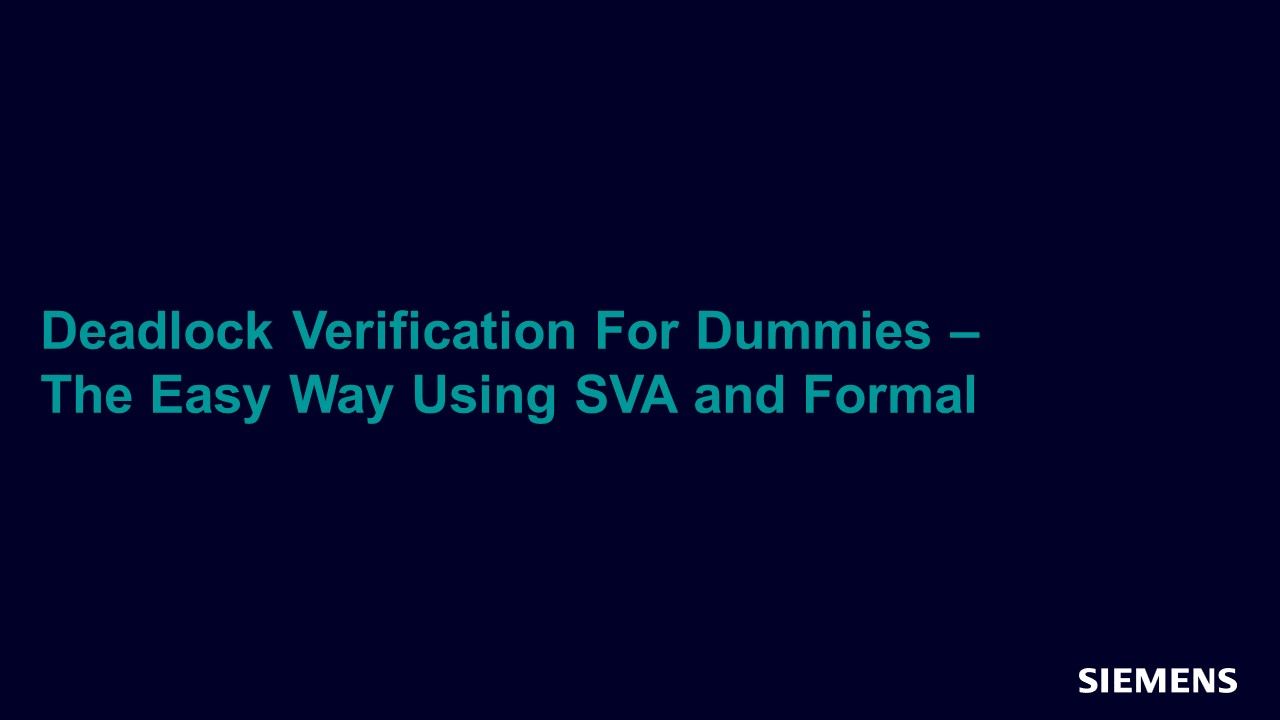
Deadlock Verification For Dummies - The Easy Way Using SVA and Formal
Webinar - Jun 02, 2020 by Mark Eslinger
In this session we will show how combining the above concepts using normal SVA liveness properties allows for RTL engineers to achieve the benefit of formal deadlock analysis without the iterative component or learning a non-standard assertion language. Deadlock verification for dummies!
-
Better UVM Debug
Resource (Tarball) - Jun 02, 2020 by
-

Better UVM Debug with Visualizer
Webinar - Jun 02, 2020 by Rich Edelman
In this session you will learn UVM Debug tips and tricks in both Post simulation and Live simulation.
-

Maximize Your UVM Productivity with Protocol-Aware Questa Verification IP
Webinar - May 28, 2020 by Munish Goyal
In this session, you will learn how the Questa Verification IP library gives you everything you need to verify standard protocols in your UVM environment. With the new Configurator GUI, it's now even easier to take advantage of these powerful verification components to maximize the effectiveness of your UVM verification.
-

Market-Driven Trends in Hardware Emulation
Webinar - May 21, 2020 by Vijay Chobisa
In this session you will learn how AI/ML, 5G, networking and ADAS designs are affecting verification and validation and how Veloce Strato & VirtuaLAB address these verification challenges.
-
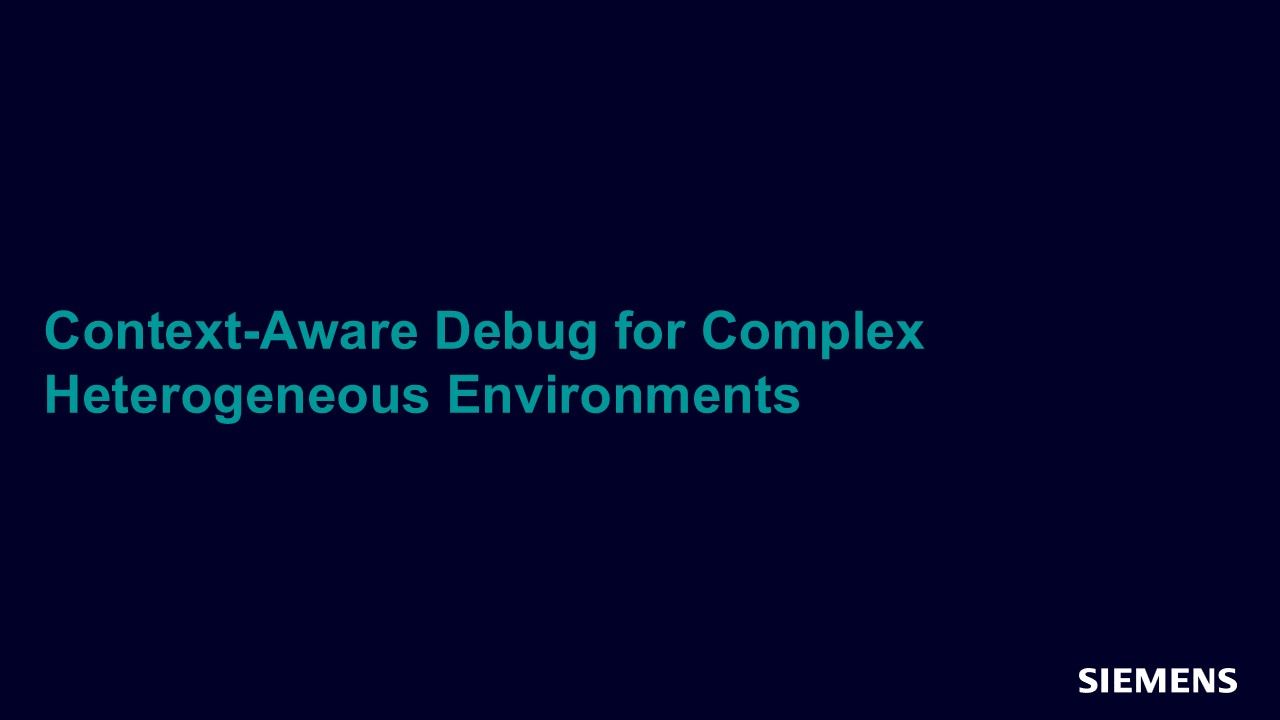
Context-Aware Debug for Complex Heterogeneous Environments
Webinar - May 21, 2020 by Rich Edelman
In this session, you will learn how you can debug using high level abstractions like classes, transactions, assertions, coverage, biometric search, automated temporal causality trace and how you can utilize Visualizer to tackle complex UVM testbench challenges in Post (Class in waveform, schematic view …) and Live Sim mode (breakpoints …).
-

Productivity in the Questa Simulation Flow
Webinar - May 15, 2020 by Gordon Allan
In this session, you will learn every step of the Questa Simulation-based verification flow has been optimized and accelerated, from regression management, to incremental compilation and elaboration, to debug and coverage.
-

Automating Clock-Domain Crossing Verification for DO-254 (and Other Safety-Critical) Designs
Paper - May 15, 2020 by Kurt Takara
Metastability is a serious problem in safety-critical designs, frequently causing chips to exhibit intermittent bugs that may not be caught until an in-flight failure. Traditional simulation does not accurately analyze multi-clock designs and relies on a manual, error-prone process. This paper describes the automated clock-domain crossing verification solution DO-254 projects need and tool assessment tips.
-
Automating Clock-Domain Crossing Verification for DO-254 (and Other Safety-Critical) Designs
Resource (Paper (.PDF)) - May 15, 2020 by Kurt Takara
This paper describes the automated CDC verification solution DO-254 projects need and tool assessment tips.
-

Optimizing Time to Bug
Webinar - May 15, 2020 by Tom Fitzpatrick
In this session, we'll be highlighting the issues that have cropped up in recent years, including the explosion in the amount of data that must now be verified and managed and the safety and security of the data and systems they control.